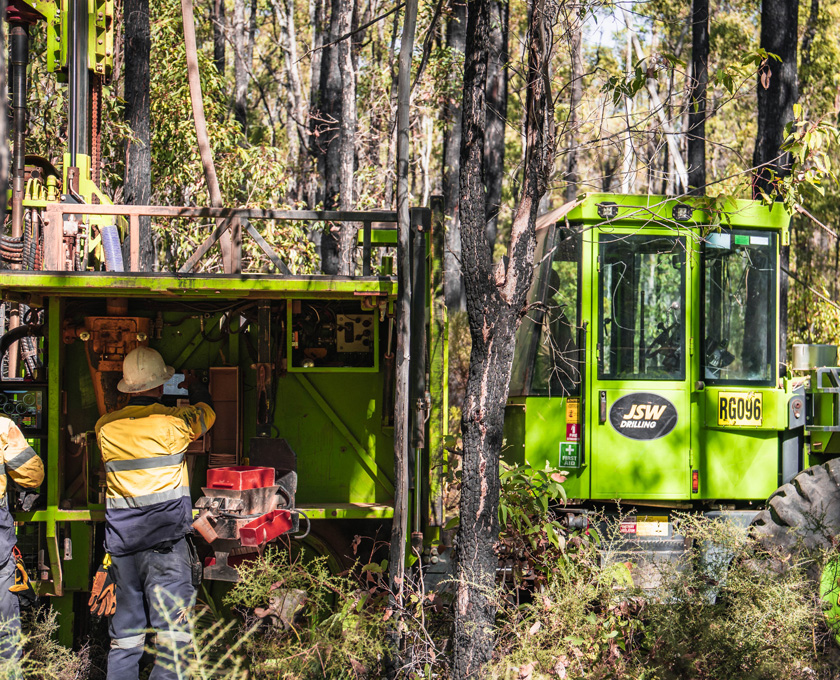June 11, 2025
Innovative rigs allow for low-impact forest drilling (Video)

The unique nature of exploration drilling in the Northern Jarrah Forest and an objective to have the lowest possible environmental impact led Alcoa contractor JSW Drilling to the mountains of Europe.
With a mandate to JSW to minimise disturbance of the forest, during exploration, Executive General Manager Steve Payne, said they implemented innovative solutions to navigate the terrain of the NJF safely and efficiently. Drawing inspiration from specialised Slovakian-made forestry equipment, JSW refined then customised a cab chassis specifically for Alcoa’s minimalist impact needs.
“These machines are light weight and agile, and capable of handling the forest terrain,” Steve said. “We import the cab chassis then fit our custom designed drills, making further extensive modifications at our premises at Bibra Lake, south of Perth so these rigs can move easily between trees and over fallen logs while minimising disturbance to undergrowth and soil structure.”
Please enable targeting cookies to watch videos. You can enable targeting cookies on our Cookie Policy page.
The cab and custom-made drill control station are equipped with protective features designed in accordance with Australian forestry standards and Alcoa’s operational requirements, ensuring enhanced safety and risk mitigation in forested environments.
One of the unique features of the chassis is its ability to both oscillate and articulate, meaning machines can rotate and turn tightly to navigate around trees. While they have high clearance to clear fallen logs and other obstacles, the centre of gravity remains low to provide exceptional stability. However, there are multiple steps between identifying drill targets and commencing drilling operations, designed to further reduce impact.
Unlike some other forms of exploration drilling common in Australia’s mining industry, which involve bulldozing areas to allow larger rigs to move in straight lines, the JSW rigs weave between trees and other significant features. Due to the large tyres, high clearance and light overall weight of the rigs, undergrowth is pushed into a flat position, that allows it to typically bounce back once the rig moves on.
“It’s quite hard to locate these machines in the forest because they don’t leave obvious tracks,” Steve said. “In some cases, you can look back at the path a rig has just driven, and you can’t even tell where it’s been.”
According to Alcoa Exploration Superintendent Peter Hill, while drill patterns are designed on a grid basis, the protection of flora and fauna habitat and other significant features takes precedence.
“While areas we drill have been logged previously, we always start by identifying and then avoiding any significant features,” Peter said.
“Biological survey teams come into new exploration areas we’ve identified for drilling to identify significant attributes for protection including fauna habitat and stream zone vegetation,” Peter said.
“Buffer zones are placed around any such areas and drill plans are updated to ensure the protected areas are avoided. Drilling teams are also trained to help identify key environmental features as they move through the forest and are required to give them a wide berth. If a drill hole happens to be too close to any trees or areas that can’t be accessed in a low-impact way, they move or skip those holes.
“It means we’re practically leaving no trace when we do our exploration drilling.”